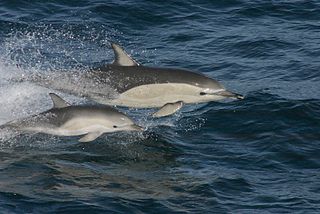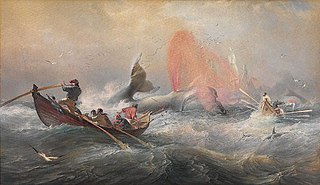 W
WThe toothed whales are a parvorder of cetaceans that includes dolphins, porpoises, and all other whales possessing teeth, such as the beaked whales and sperm whales. Seventy-three species of toothed whales are described. They are one of two living groups of cetaceans, the other being the baleen whales (Mysticeti), which have baleen instead of teeth. The two groups are thought to have diverged around 34 million years ago (mya).
 W
WDelphinida is an clade of cetaceans in the parvorder Odontoceti, the toothed whales. It includes all modern oceanic dolphins, porpoises, and their relatives, such as Lipotidae and Iniidae.
 W
WDelphinoidea is the largest group of toothed whales with 66 genera in 6 families. The largest living member of the superfamily is the killer whale, which can reach 6 tons, while the smallest is the vaquita.
 W
WIdiorophus is a genus of toothed whales in the family Physeteridae. Fossils have been found in the Colhuehuapian Gaiman Formation of Argentina and the Libano Sandstone in Italy.
 W
WLipotidae is a family of river dolphins containing the functionally extinct baiji and the fossil genus Parapontoporia. The genus Prolipotes, which is based on a mandible fragment from Neogene coastal deposits in Guangxi, China, has been classified as an extinct relative of the baiji, but is dubious.
 W
WPhyseterida is a rank that contains both Kogiidae and modern sperm whales and some extinct species. It was named by J. Grey in 1821. It is an unranked classification.
 W
WWhaling in Australian waters began in 1791 when five of the 11 ships in the Third Fleet after landing their passengers and freight at Sydney Cove then left Port Jackson to engage in whaling and seal hunting off the coast of Australia and New Zealand. The two main species hunted by such vessels in the early years were right and sperm whales. Later, humpback, bowhead and other whale species would be taken.